Ford Transit Bus vs Toyota Land Cruiser – Performance, range & efficiency compared
Compare performance, boot capacity, efficiency and price at a glance.
Find out which car is the better choice for you – Ford Transit Bus or Toyota Land Cruiser?
Costs and Efficiency:
When it comes to price and running costs, the biggest differences usually appear. This is often where you see which car fits your budget better in the long run.
Ford Transit Bus has a significantly advantage in terms of price – it starts at 50500 £, while the Toyota Land Cruiser costs 70700 £. That’s a price difference of around 20205 £.
Fuel consumption also shows a difference: Ford Transit Bus manages with 9.40 L and is therefore slightly more efficient than the Toyota Land Cruiser with 10.60 L. The difference is about 1.20 L per 100 km.
Engine and Performance:
Under the bonnet, it becomes clear which model is tuned for sportiness and which one takes the lead when you hit the accelerator.
When it comes to engine power, the Toyota Land Cruiser has a distinct edge – offering 205 HP compared to 150 HP. That’s roughly 55 HP more horsepower.
There’s also a difference in torque: Toyota Land Cruiser pulls noticeable stronger with 500 Nm compared to 390 Nm. That’s about 110 Nm difference.
Space and Everyday Use:
Whether family car or daily driver – which one offers more room, flexibility and comfort?
Seats: Ford Transit Bus offers distinct more seating capacity – 9 vs 7.
In curb weight, Ford Transit Bus is a bit lighter – 2338 kg compared to 2610 kg. The difference is around 272 kg.
In terms of boot space, the Toyota Land Cruiser offers clearly more room – 742 L compared to 0 L. That’s a difference of about 742 L.
When it comes to payload, Ford Transit Bus significantly takes the win – 1162 kg compared to 540 kg. That’s a difference of about 622 kg.
Who wins the race?
The Toyota Land Cruiser proves to be is largely superior and therefore becomes our DriveDuel Champion!
Toyota Land Cruiser is the better all-rounder in this comparison.
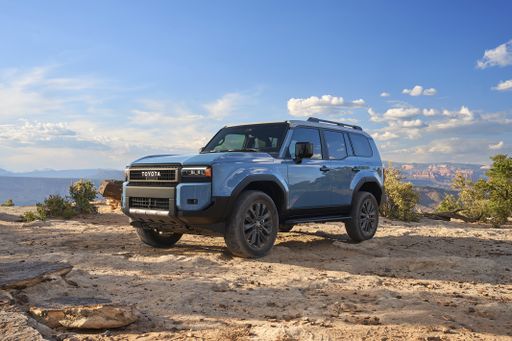 @ Toyota Motor Corporation
@ Toyota Motor Corporation
Toyota Land Cruiser
Ford Transit Bus
The Ford Transit Bus is renowned for its robust performance and spacious interior, making it an ideal choice for both commercial and personal use. With its efficient handling and modern design, it effortlessly combines practicality with comfort. Its adaptability and versatility ensure it meets the demands of various driving needs, from urban transport to long-distance journeys.
details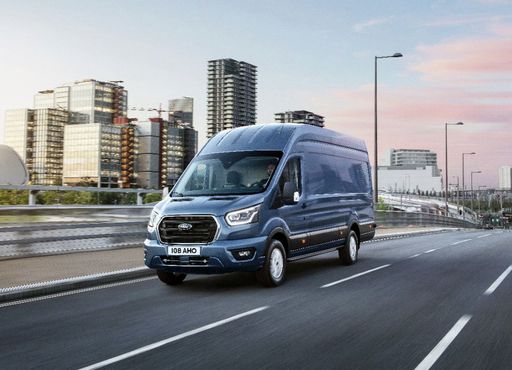 @ Ford Motor Company / Ford Media Center
@ Ford Motor Company / Ford Media Center
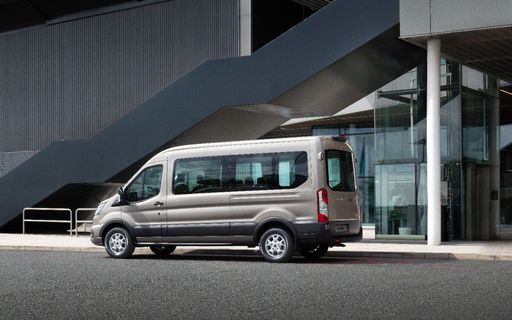 @ Ford Motor Company / Ford Media Center
@ Ford Motor Company / Ford Media Center
 @ Ford Motor Company / Ford Media Center
@ Ford Motor Company / Ford Media Center
Toyota Land Cruiser
The Toyota Land Cruiser is renowned for its robust durability and exceptional off-road capabilities. Its design combines a rugged exterior with a comfortable and functional interior, appealing to both adventure seekers and city drivers. The vehicle's reliability and advanced technology make it a popular choice for those who require a dependable SUV that can handle a variety of terrains with ease.
details @ Toyota Motor Corporation
@ Toyota Motor Corporation
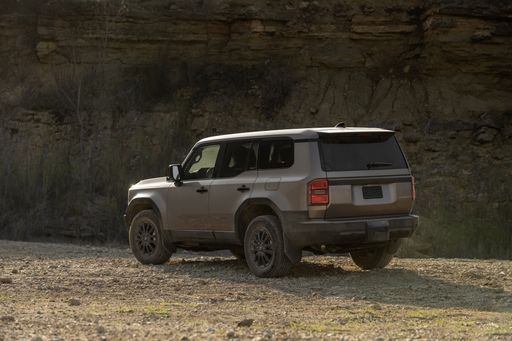 @ Toyota Motor Corporation
@ Toyota Motor Corporation
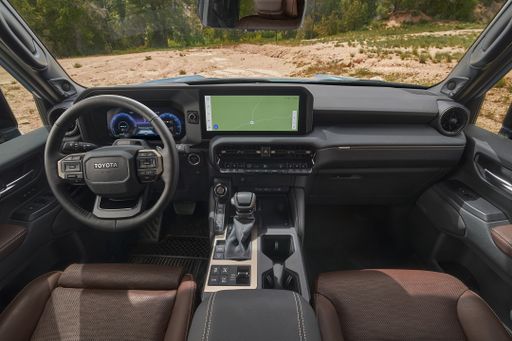 @ Toyota Motor Corporation
@ Toyota Motor Corporation
 @ Ford Motor Company / Ford Media Center
@ Ford Motor Company / Ford Media Center
|
 @ Toyota Motor Corporation
@ Toyota Motor Corporation
|
|
|
|
Costs and Consumption |
|
|---|---|
|
Price
50500 - 52900 £
|
Price
70700 - 79300 £
|
|
Consumption L/100km
9.4 - 9.5 L
|
Consumption L/100km
10.6 - 10.8 L
|
|
Consumption kWh/100km
-
|
Consumption kWh/100km
-
|
|
Electric Range
-
|
Electric Range
-
|
|
Battery Capacity
-
|
Battery Capacity
-
|
|
co2
245 - 248 g/km
|
co2
278 - 284 g/km
|
|
Fuel tank capacity
70 L
|
Fuel tank capacity
80 L
|
Dimensions and Body |
|
|---|---|
|
Body Type
Bus
|
Body Type
Off-Roader
|
|
Seats
9
|
Seats
5 - 7
|
|
Doors
4
|
Doors
5
|
|
Curb weight
2338 - 2385 kg
|
Curb weight
2610 kg
|
|
Trunk capacity
0 L
|
Trunk capacity
143 - 742 L
|
|
Length
5531 - 5981 mm
|
Length
4925 mm
|
|
Width
2059 mm
|
Width
1980 mm
|
|
Height
2530 - 2533 mm
|
Height
1935 mm
|
|
Max trunk capacity
-
|
Max trunk capacity
1829 - 1895 L
|
|
Payload
1115 - 1162 kg
|
Payload
540 kg
|
Engine and Performance |
|
|---|---|
|
Engine Type
Diesel
|
Engine Type
Diesel
|
|
Transmission
Automatic
|
Transmission
Automatic
|
|
Transmission Detail
Automatic Gearbox
|
Transmission Detail
Automatic Gearbox
|
|
Drive Type
Front-Wheel Drive
|
Drive Type
All-Wheel Drive
|
|
Power HP
130 - 150 HP
|
Power HP
205 HP
|
|
Acceleration 0-100km/h
-
|
Acceleration 0-100km/h
12.30 s
|
|
Max Speed
-
|
Max Speed
170 km/h
|
|
Torque
360 - 390 Nm
|
Torque
500 Nm
|
|
Number of Cylinders
4
|
Number of Cylinders
4
|
|
Power kW
96 - 110 kW
|
Power kW
151 kW
|
|
Engine capacity
1996 cm3
|
Engine capacity
2755 cm3
|
General |
|
|---|---|
|
Model Year
2024
|
Model Year
2025
|
|
CO2 Efficiency Class
G
|
CO2 Efficiency Class
G
|
|
Brand
Ford
|
Brand
Toyota
|
What drivetrain options does the Ford Transit Bus have?
Available configurations include Front-Wheel Drive.
The prices and data displayed are estimates based on German list prices and may vary by country. This information is not legally binding.
